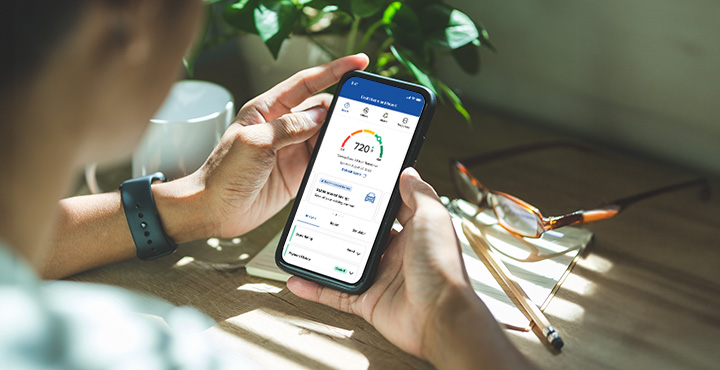
Make Your Home Work For You
When you’re planning a home remodel, a Home Equity Loan. Use your home's equity— the difference between what you owe on your current mortgage loan and the home’s current market value —to borrow for multiple purposes including:
- Home improvements
- Home repair projects
- Education expenses
- Medical expenses
- Debt consolidation
What is a Home Equity Loan?
Home equity loans will give you a lump sum of cash which is repaid over a fixed period with a fixed interest rate. With a low fixed interest rate1 and fixed monthly payments over the life of the loan this is a great choice for individuals planning out a specific home project. Landmark makes it easy to apply with a personal finance officer and offers terms that can fit your budget ranging from 5-20 years. If you find that you need additional funding a HELOC may be a better choice.
-
Benefits of a home equity loan
Receive lower rates and no annual fees. A home equity loan, sometimes referred to as a renovation loan, is great when you know exactly how much cash you will need for your projects and prefer consistent payment options. -
Consider a home equity loan to:
If you need help consolidating high-interest debts, want to pay off medical or education expenses or have a budgeted home improvement project, choose the term that best suits your needs and utilize a home equity loan.
Home Equity Loans vs HELOC & Cash-Out Refinance
While they may sound similar and are both secured by your home's equity there are some key differences between a Home Equity Loan and a HELOC.
-
HELOC
- Revolving credit line
- Adjustable interest rate
- Perfect for repairs or small projects
- Use funds as needed
-
Home Equity Loan
- One-time lump-sum
- Fixed interest rate
- Great option for large projects like room additions or remodeling
-
Cash-Out Refinance
- One-time lump-sum
- Fixed interest rate
- Great option for large projects like room additions or remodeling
Home Equity Loan Process
-
![number 1]()
Apply
You apply for a construction loan and get approved. -
![number 2]()
Build
We fund the loan, and your builder starts construction. -
![]()
Fund
Your builder accesses the loan funds as construction is completed. -
![]()
Convert
The loan converts to a permanent mortgage once construction is complete.
Filter by:
-
![Couple receiving keys to their new car]()
BLOGS
April 5, 2024
5 Ways to Keep a Budgeting Strategy Current
Get to know the current trend called 'Loud Budgeting' and how you can incorporate it into your everyday life to achieve your financial goals. -
![Checking credit score on mobile device]()
BLOGS
April 4, 2024
How To Improve Your Credit Score
Understanding your credit can be a complicated subject. Get a better idea of how your credit is calculated and learn a few steps you can take to improve your credit score. -
![Couple sitting in an office with financial consultant looking at documents]()
BLOGS
April 2, 2024
5 Benefits of Early Tax Planning With a Financial Consultant
Learn the benefits of early tax planning and how enlisting in a financial consultant can help ensure a smooth process.
-
Home Equity Line of Credits (HELOCs) operate on a monthly billing cycle, similar to a credit card. The minimum payment is calculated at the beginning of each cycle, and that payment is due before the next cycle begins.
For example, let’s say your billing period is from June 3 to July 2. The payment is cycled at end of business on July 2, with the payment due by end of business on August 1 (the next cycle is July 3 to August 2). If the payment due on August 1 is not paid before the cycle on August 2, the billing notice will show two payments due with one of them past due. This assumes no partial payments were made.
There are multiple ways to find out your payment amount and due date. You will receive a loan billing notice every month stating the minimum payment amount and when it is due. This will be mailed to you unless you are enrolled in eDocuments. Billing notices can be received electronically if the member has opted in for electronic statements/notices. The amount due and next due date can also be verified by viewing your account online through Digital Banking or contact us.
-
When applying for a Home Equity Loan, please provide the following:
-
Proof of income (pay stubs for the last 30 days, 2 years W2 or 1040s)
-
Proof of Homeowner's Insurance (policy declaration page)
-
If you have a first mortgage, your most recent statement
-
A copy of your tax bill
Additional information may be required.
-
-
A home equity loan is a term loan in which the borrower gets a one-time lump sum. The loan is repaid over a fixed term, at a fixed interest rate, with equal monthly payments.
A HELOC works more like a credit card. You’re given a line of credit that’s available for a set time frame, usually up to 10 years. This is called the draw period — during this time, you can withdraw money as you need it.
HELOCs can fall under two scenarios:
One with an interest-only draw period (applies when LTV is up to 80%)
One with a draw period where you pay interest and principal (applies when LTV is 80.01% to 90%)
As you pay off the principal, your credit revolves and you can use it again. When a line of credit has expired, you enter the repayment period, which can last up to 20 years depending on your loan-to-value ratio (LTV). You’ll pay back the outstanding balance that you borrowed, as well as any interest owed. If you have questions on LTV or the scenario that your line of credit may fall under, please contact us.
A HELOC has a variable interest rate that is tied to the Prime Rate as published in the Wall Street Journal. As the prime rate moves up or down, so does your HELOC rate. Payments will vary depending on the interest rate and your outstanding balance.


